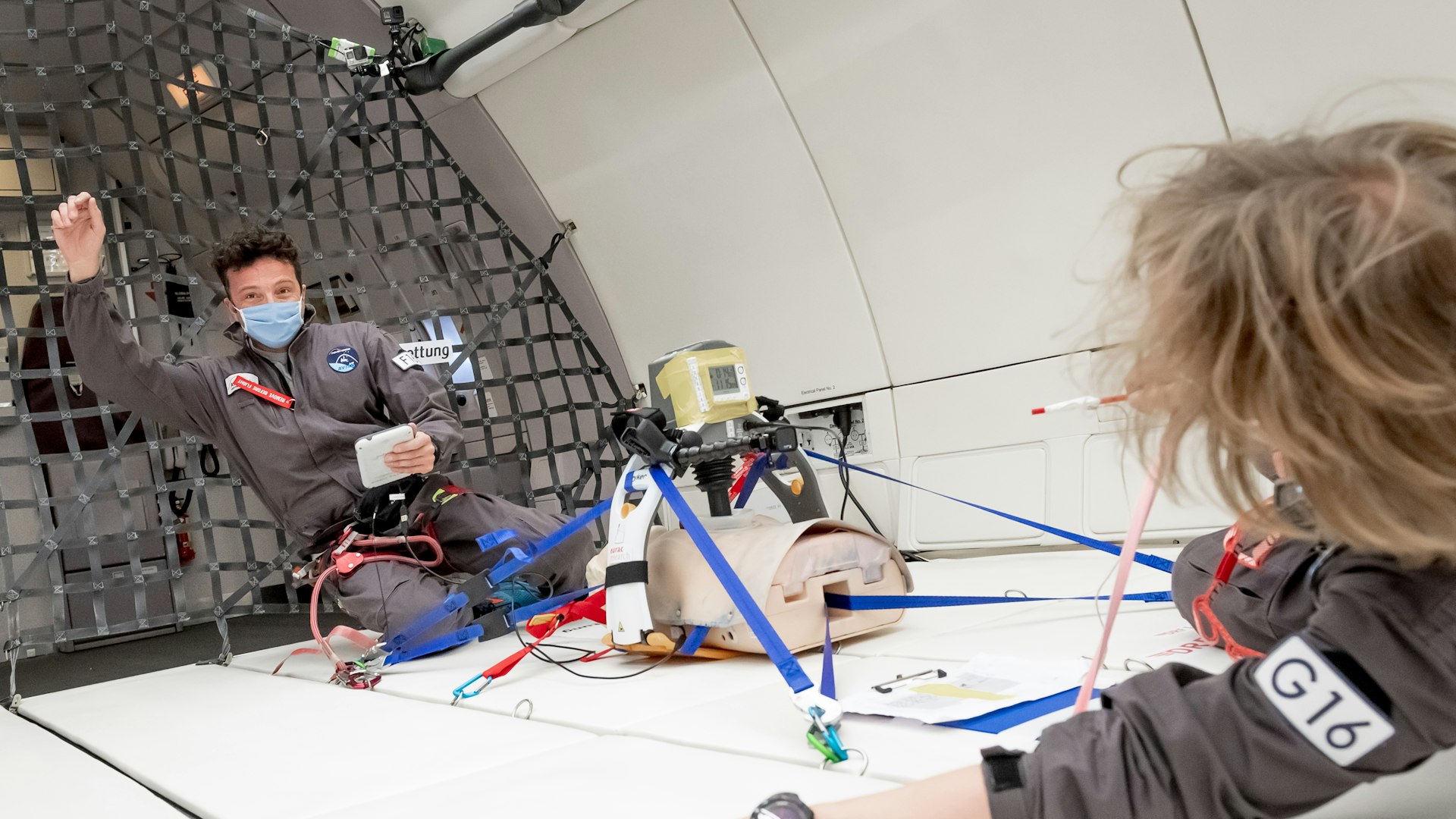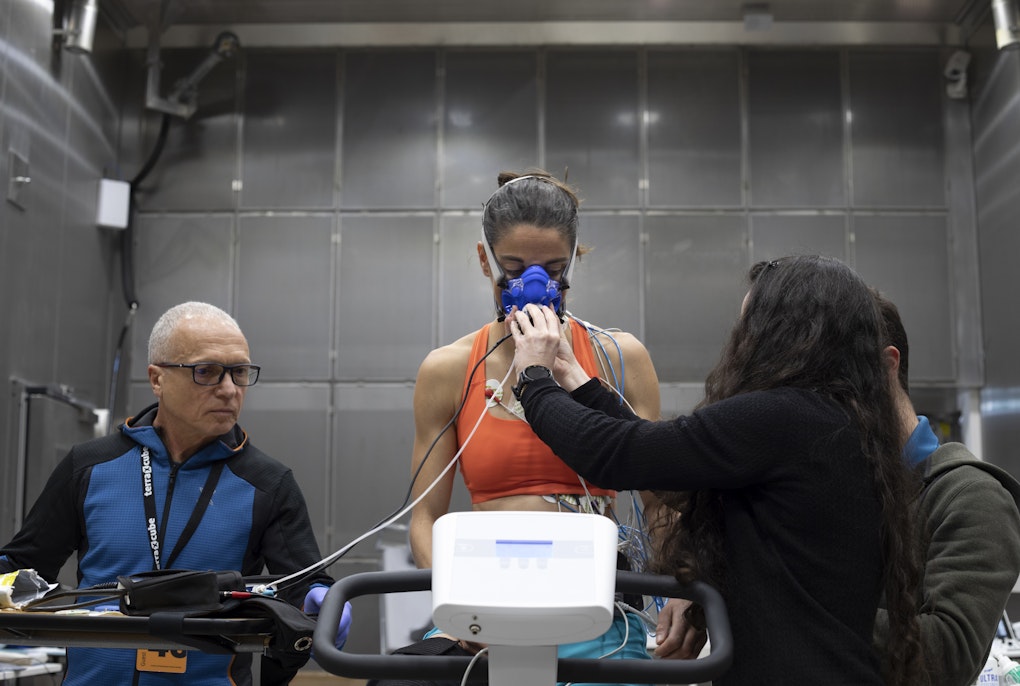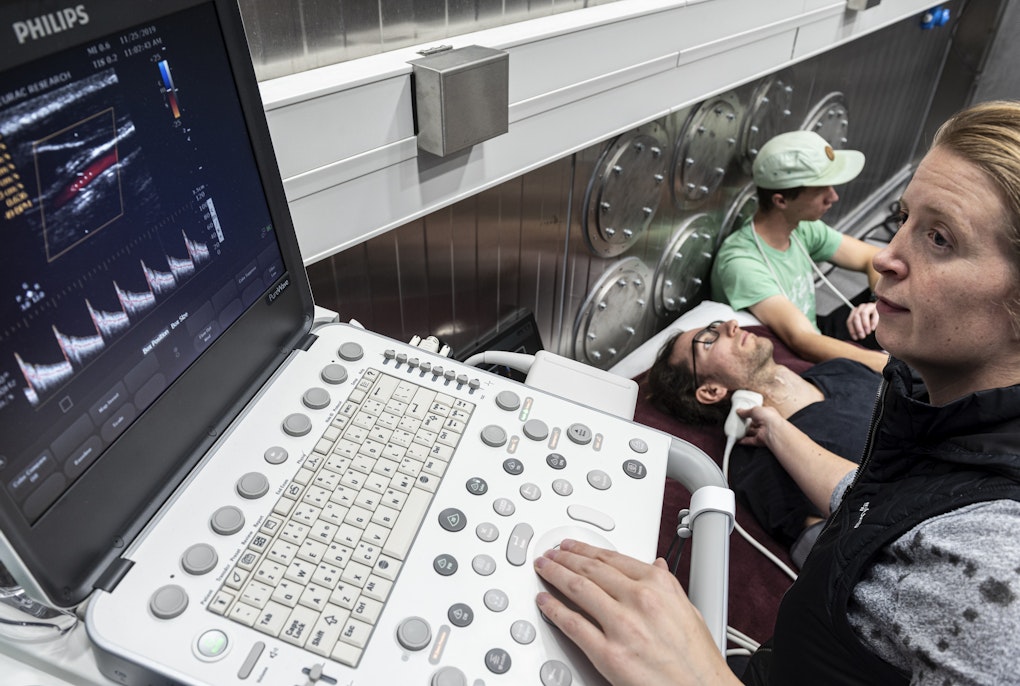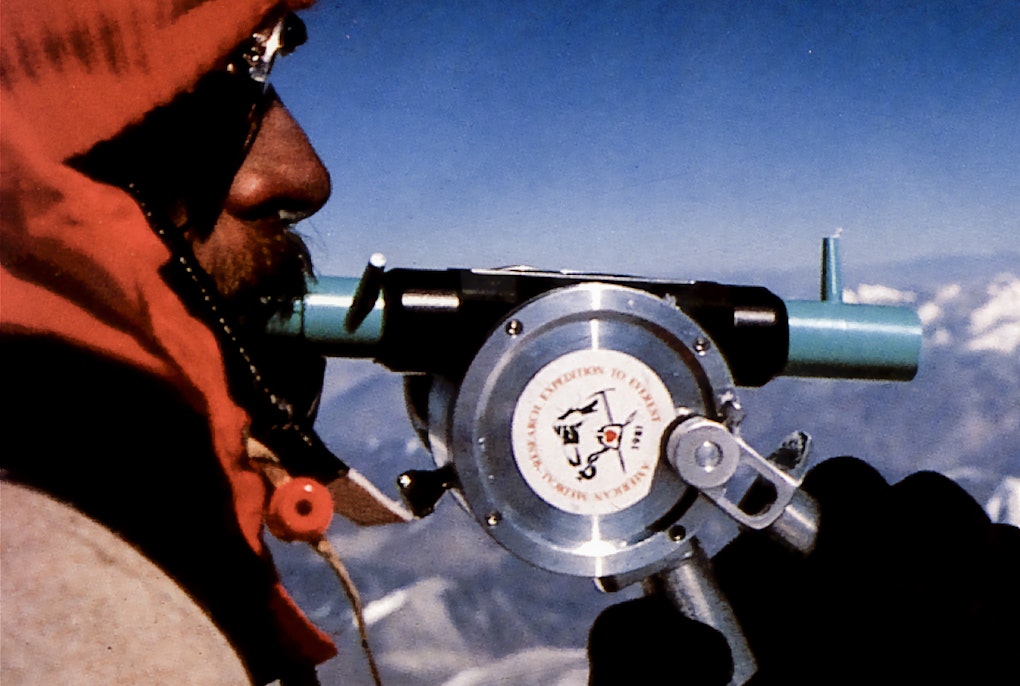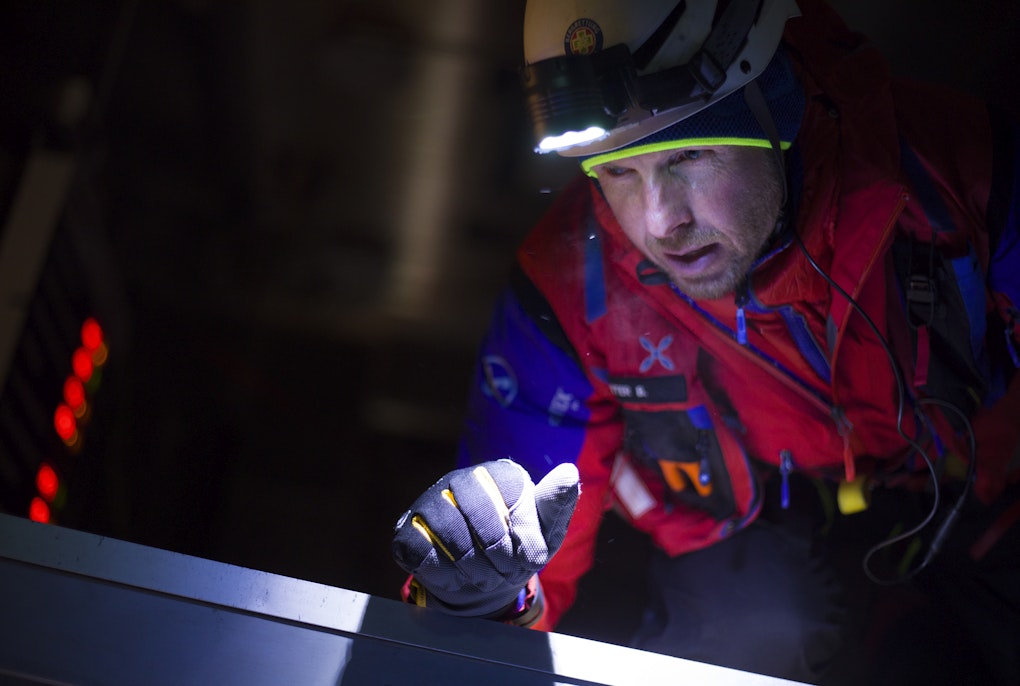magazine_ Article
Houston, we have a (heart) problem
Our researchers tested an automated heart massager to measure its efficacy on space missions
Eurac Research physicians tested the LUCAS automatic heart massager aboard an airbus that simulated altered gravity by means of a parabolic flight. The goal of the study was to ascertain whether the device could be used for cardiac emergencies in space.
Last summer saw the first tourist flights to space. Until now, the average person has tended to travel much closer to the Earth’s surface, but according to emerging space companies, this number is expected to increase. Quickly. A few days ago, the filming of a movie shot aboard the International Space Station ended and though the small Russian crew was the first in history to deal with the absence of gravity, it most likely won’t be the last. The era in which space was frequented only by astronauts is over. The final frontier has been conquered. And questions about health risk management in space are being asked. How do space voyagers perform physiologically in orbit? Compared to professionally trained astronauts, space tourists have a higher average risk of developing heart problems in a modified gravity situation.
Those who manage flights in space will have to face new challenges and to review some risk management practices, which of course, are more complicated than usual in orbit. Current earthbound guidelines for performing cardiac massage properly require that more than one person should administer the cardiac massage, so that turns can be taken and the effectiveness of chest compressions is maintained. This is not an easy guideline to meet in space, where crews are kept to a bare minimum and fatigue strikes more quickly than it would on Earth.
And that’s where LUCAS could help. LUCAS is an automatic cardiac massager, already being used by some rescue teams both on helicopters and in inhospitable environments. Eurac Research researchers Giacomo Strapazzon and Alessandro Forti tested the automatic massager in altered gravity to obtain scientific results on its effectiveness and usefulness in these compromised conditions. With the data from these tests, space flight companies will be able to better evaluate the benefits of keeping machines like LUCAS on board as well as being able to streamline their crew numbers accordingly.
The test
The airbus carrying 35 researchers from around the world took off from Dübendorf military airport in Switzerland. During the two-hour flight, the aircraft performed 16 parabolic maneuvers - ascending and descending following a particular trajectory - that created a series of zero-gravity conditions inside the fuselage that lasted for 22 seconds each, just like in space.
The flight campaign, organized by the Swiss foundation Sky Lab takes place every year to allow institutions and companies to conduct experiments and studies on microgravity.
For the occasion, the aircraft is set up as a real laboratory with each of the research teams having their own designated workstation for their specific tests; when the aircraft reaches cruising altitude, the experts who have been strapped into the aircraft, can start testing.
LUCAS performed chest compressions on the dummy throughout the flight under the careful observation of the two doctors from Eurac Research.
The Results
The data obtained demonstrated the effectiveness of the massage performed by LUCAS for the entire duration of the flight, both in reduced and increased gravity. "It is well known that the traditional methods for performing cardiopulmonary resuscitation in microgravity do not correspond with terrestrial standards. Our data is the first scientific evidence of the effectiveness of automatic massagers, and it represents a possible answer to this problem" explains Giacomo Strapazzon, director of the Eurac Research Institute of Mountain Emergency Medicine.
These results are not only relevant in light of the evolution of space travel. Missions are becoming increasingly complex even for professional astronauts. Stays in space are becoming longer and longer, and during the same mission, crews may also encounter different gravities. For astronauts, heart problems could result not only from physiological reactions, but also from external causes, for example the presence of water in their suits while spacewalking or performing maintenance activities outside the spacecraft.
And though the test paves the way for a new possibility of managing cardiac emergencies in space there are still many more steps to be taken. Prior to the test, the massager had never before been used in these conditions. The massager will now be investigated further to evaluate whether to integrate it into the safety of space missions protocols.
Passing the torch
Giacomo Strapazzon has recently been appointed new director of the Eurac Research Institute for Mountain Emergency Medicine following a handover from Hermann Brugger, the physician and researcher who founded the Institute in 2009. For the past 12 years, researchers led by Brugger and vice director Strapazzon, have achieved important results with studies on resuscitation, effects of hypoxia and hypothermia having gained international recognition both in the scientific community and among mountaineers. Recent years have seen terraXcube, the infrastructure that simulates the most extreme climates on Earth, opening new frontiers in mountain medicine. Strapazzon will continue to lead the group along these pioneering paths, aiming ever higher to reach the peak of mountain emergency medical research.
